Feeling lost choosing a display company? Many fail to deliver on their promises. I'll show you what separates the great partners from the rest of the pack.
Top retail display companies are more than just manufacturers; they are strategic partners. They offer deep industry knowledge, innovative design, and a collaborative process. They focus on structural integrity and understanding a brand's core goals to create displays that actually boost sales.
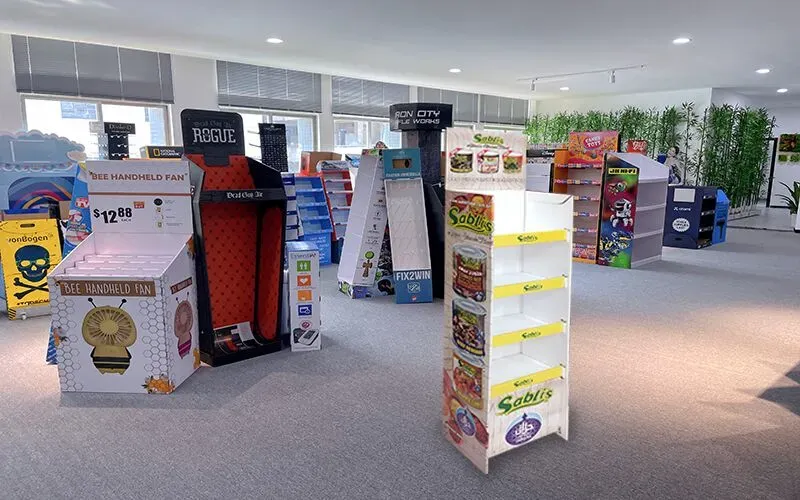
You might think all display companies are the same, just creating boxes to hold products. But after 16 years in this business, I can tell you that couldn't be further from the truth. The difference between a good display and a great one can be the difference between a product that sells and one that gathers dust. It all starts with understanding the retailer's mindset. Let's dive into how they make their decisions, because that's where a great display company really shines.
How retailers decide what to include in displays?
Ever wonder why retailers pick certain products for displays? It's not random. Their decisions are based on very specific data and sales goals, which I'll explain now.
Retailers prioritize products based on sales data, seasonality, and promotional campaigns. They look for items with high-profit margins, new launches, or products part of a co-op advertising agreement with brands. A great display must align with these strategic business objectives to get approved.
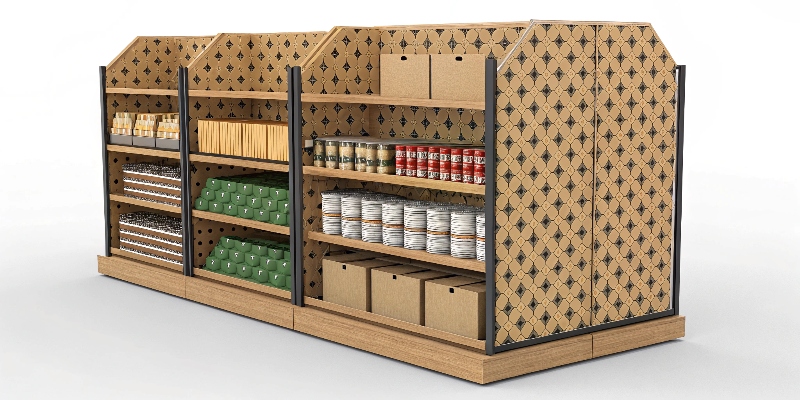
Retailers are focused on one main thing: maximizing sales per square foot. Every decision is filtered through that lens. I've sat in countless meetings where a beautiful design was rejected because it didn't align with the retailer's immediate business needs. This can be frustrating for a designer, but understanding their logic is key. A top display company helps bridge this gap. Here's a breakdown of what retailers are thinking.
Key Decision Factors
- Sales Performance Data1: Retailers constantly track what's selling. Products with high velocity or that are trending upwards are prime candidates for display placement to accelerate sales even more. They won't risk valuable floor space on a product with no sales history unless it's a new launch.
- Profit Margins2: High-margin products are very attractive. A display that can boost sales of these items offers a better return on investment for the retailer's space.
- Strategic Initiatives3: This includes new product launches, seasonal promotions, and exclusive items. The display absolutely must support the bigger campaign.
- Brand Partnerships4: Sometimes, brands pay for premium placement through co-op funding. In these cases, the decision is already made. The challenge then becomes creating a display that meets both strict brand and retailer standards.
What is essential for successful merchandise display?
Your displays look good but aren't boosting sales? Shoppers walk right by. A successful display isn't just about looks; it’s about a few key elements working together perfectly.
A successful display must be attention-grabbing, easy to shop from, and structurally sound. It needs clear messaging that tells a story, highlights the product's value, and aligns perfectly with the brand's identity. Without these, even the most creative design will fail to perform.
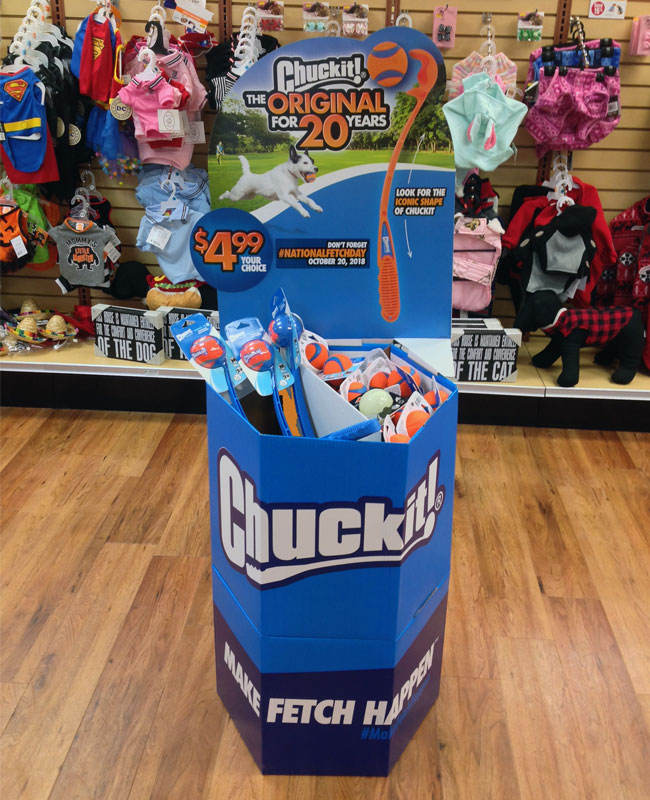
Over my 16 years, I've seen beautifully designed displays collapse under the weight of products. I've also seen sturdy but boring displays get completely ignored by shoppers. Success is a balance. It's not just art; it's engineering and psychology combined. For designers, this is the daily challenge. The goal is to hit the sweet spot where design, function, and brand message meet. A display is a silent salesperson, and it needs to do its job effectively from the moment it hits the floor.
I use a simple checklist with my team to make sure we cover all the bases for every single project.
| Essential Element | What It Means in Practice |
|---|---|
| Visual Impact5 | Uses color, shape, and graphics to stop a customer in their tracks. |
| Clear Hierarchy6 | Guides the shopper's eye from the main message to the product itself. |
| Structural Integrity7 | Must hold products safely for the entire campaign duration, without bending or breaking. |
| Shopability8 | Customers can easily see, reach, and take the product without any frustration. |
| Brand Consistency9 | The display looks and feels like it belongs to the brand, reinforcing trust. |
Getting these five things right is simply not negotiable for a successful display.
Who sets up store displays?
You’ve designed the perfect display. But what if it’s assembled incorrectly in the store? This is a common failure point that can be avoided with smart planning.
Store displays are typically set up by store employees, dedicated merchandising teams, or third-party contractors hired by the brand. The key is designing a display that is intuitive and easy to assemble, regardless of who is building it, often with minimal or no tools required.
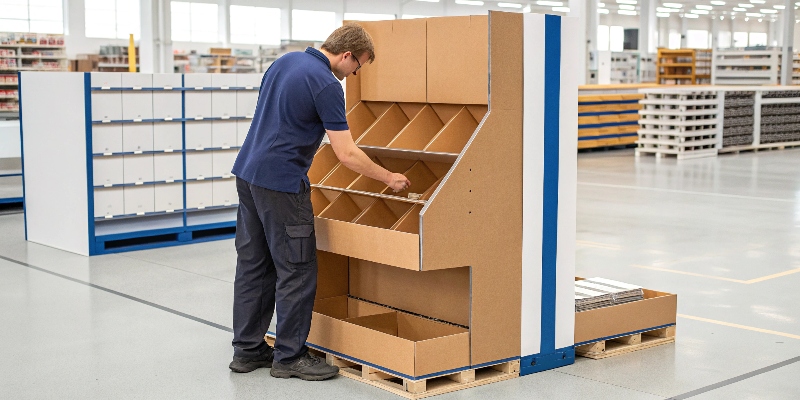
I remember a project early in my career. We designed a stunning, complex display. It looked incredible in our office. But when it shipped to hundreds of stores, the execution was a disaster. Why? We assumed a skilled team would assemble it. In reality, it was a busy store employee with five minutes to spare between tasks. That taught me a huge lesson: you must design for the assembler. A great display company always asks, "Who is building this?" at the very start of the project. It prevents failure before it even happens.
Designing for Assembly10
The answer to who builds the display changes the entire design process.
- Store Staff: They are busy and not trained in assembly. Designs for them must be ultra-simple, maybe pop-open or have just a few interlocking pieces. Clear, visual instructions are an absolute must.
- Brand Merchandisers: They have more experience and can handle slightly more complex setups. But efficiency is still key, as they have many stores to visit in a day.
- Third-Party Installers: These are professionals. You can be more ambitious with the design, but it will increase the brand's costs. This approach is usually for high-value or tech-integrated displays.
What are the various components of retail store display?
When you think of a display, do you just picture a stand? Thinking this way limits your creativity. A truly effective retail display is a system of well-planned components.
Key components include the main structure, the header for branding, shelves or hooks to hold products, and informational graphics. Sometimes, digital screens or lighting are also integrated to enhance the customer experience. Each part has a job to do.

Treating a display as a collection of components allows for better design and functionality. Each part has a specific role. My team and I always start a project by breaking down the display into these core parts. This helps us ensure every element serves a purpose and contributes to the overall goal of selling the product. It’s a systematic approach that reduces errors and improves the final result. Thinking this way helps a designer organize their thoughts and present a clearer vision to the client.
Core Display Components11
- The Structure: This is the foundation. It could be a Floor Stand (also known as a PDQ), a Counter Display Unit (CDU), or a larger Pallet Display. Its main job is to provide stability and support everything else.
- The Header Card: This is the billboard. It grabs attention from across the aisle and communicates the main brand message or promotion. It's often the first thing a customer sees.
- Shelves or Hooks: These are the workhorses. They must be designed for the specific product's weight, size, and shape. Spacing and depth are critical for making the products easy to take.
- Side Panels & Skirt: These are extra branding real estate. They can tell a deeper story, show lifestyle images, or provide technical specs for the products.
- Interactive Add-ons12: These are things like brochure holders or tear-off coupon pads that provide extra value and encourage the customer to engage with the display.
Conclusion
Top display companies are strategic partners. They blend data-driven decisions with smart design, focusing on what's essential for a display to succeed, from assembly to the sales floor.
-
Understanding sales performance data is crucial for retailers to make informed decisions about product displays. ↩
-
Profit margins play a significant role in determining which products are prioritized for display, impacting overall sales. ↩
-
Exploring strategic initiatives helps understand how retailers align displays with broader marketing campaigns. ↩
-
Brand partnerships can influence display placements, making it essential to understand their impact on retail strategies. ↩
-
Visual impact is key to attracting customers; learning more can enhance your display design strategies. ↩
-
A clear hierarchy guides customer attention, making it vital for effective display design. ↩
-
Structural integrity ensures displays can hold products safely, which is crucial for customer trust and safety. ↩
-
Shopability refers to how easily customers can interact with displays, directly affecting sales. ↩
-
Brand consistency reinforces customer trust and recognition, making it essential for effective merchandising. ↩
-
Designing for assembly can prevent common setup failures, ensuring displays are effective from the start. ↩
-
Knowing the core components helps in creating effective and functional retail displays. ↩
-
Interactive add-ons enhance customer engagement, making displays more effective in driving sales. ↩



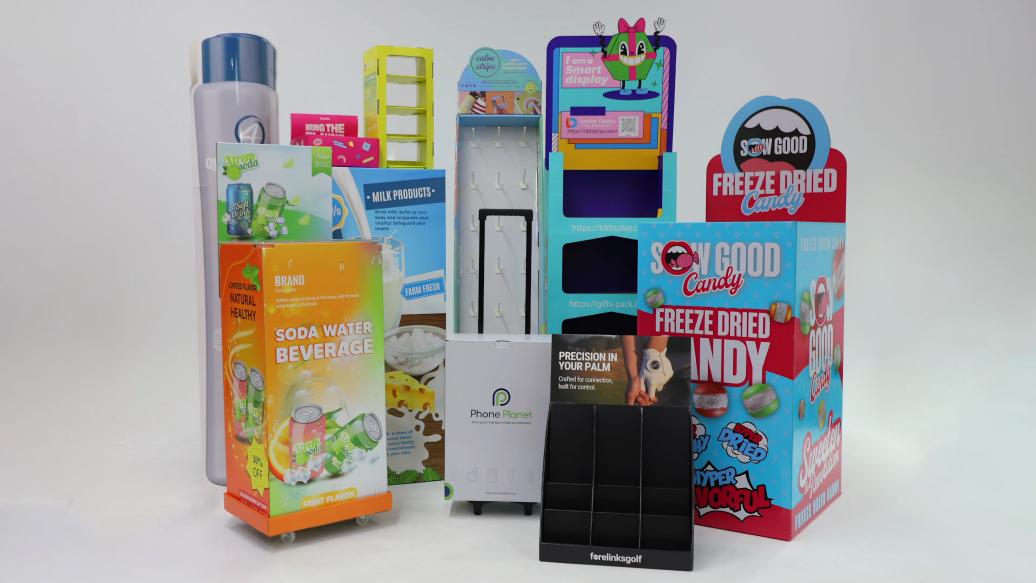


5 Responses